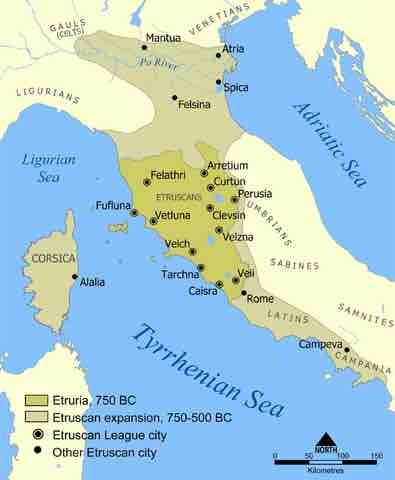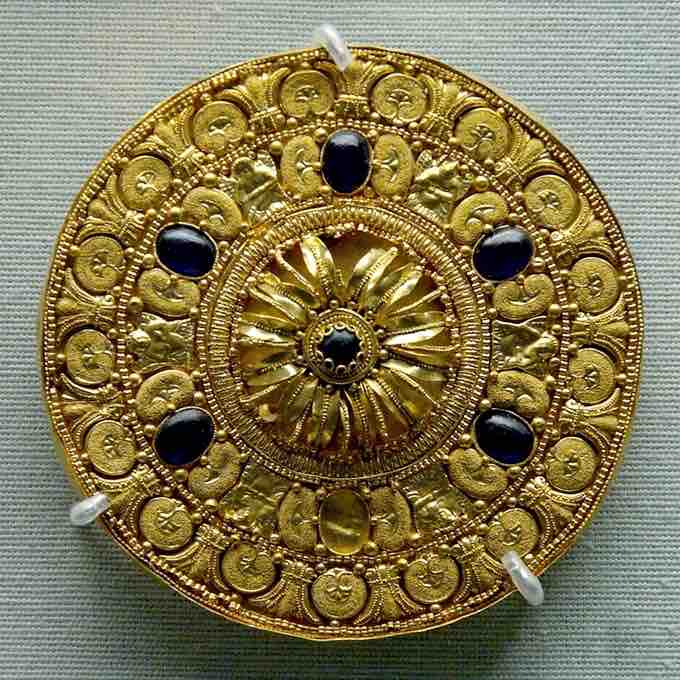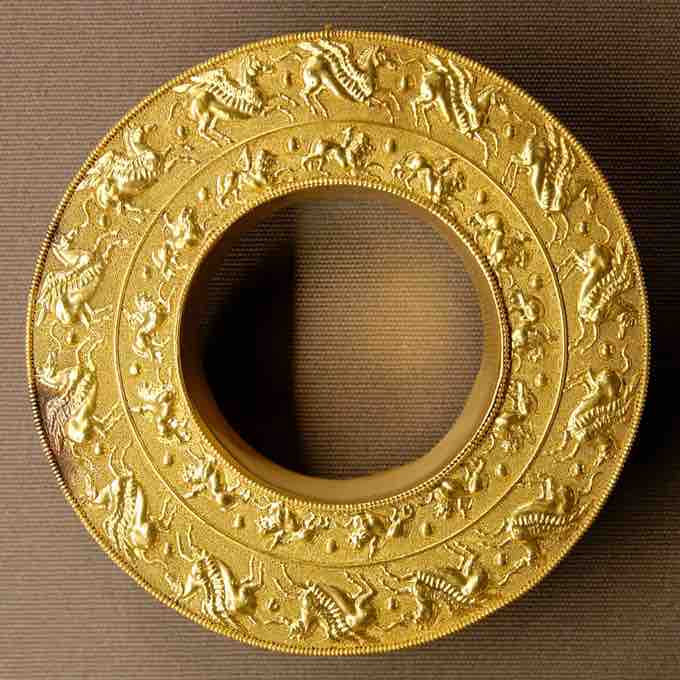Etruscan Civilization
The Etruscan civilization thrived in central Italy during the first millennium BCE. Occupying the approximate area of present-day Tuscany, the region derives its name from the word "Etruscan." During the eighth and seventh centuries BCE, the Etruscans became sea traders and actively participated in Mediterranean trade. The civilization also began to expand, and the Etruscans eventually settled as far north as the Po River and as far south as the Tiber River and northern parts of Campania . Aside from trade, a large part of Etruscan wealth came from the rich natural resources of the territories they lived in. The soil was fertile for agriculture and the land was rich with minerals and metals, which were mined. Etruscan cities and regions appear to have been ruled over by a king, and Etruscan kings are accounted for as the early rulers of Rome. While the Romans proudly remember overthrowing their Etruscan rulers, many aspects of Etruscan society were adopted by the Romans.

Map of the Etruscan civilization, 750-500 BCE.
Very little is known about the Etruscans through written records. The Etruscans did not leave any written historical accounts, and what is known today about their culture and history is written records by the Greeks and Romans which have survived. These records, while providing information, view Etruscan culture from an outside, foreign eye and so can be deceptive in their accounts of Etruscan society. Because of this, most of what is known about the Etruscans comes from archaeological records. Since many Etruscan cities have been continually occupied since their foundation, first by the Etruscans, then Romans, up through modern day, a majority of Etruscan archaeological sites are tombs and necropoleis. Archaeologists and historians rely on Etruscan funerary culture to derive ideas about the society's culture, customs, and history.
Orientalizing Art
Despite the distinctive character of Etruscan art, the history and stylistic division generally follows the divisions seen within Greek art history and stylistic developments. The Etruscans established contact with Eastern cultures, including Greeks, Phoenicians, and Egyptians, around 700 BCE, beginning the Orientalizing period of their culture. As is similar with the Greek Orientalizing period, the art of this period in Etruria reflects Eastern themes and motifs. Patterning and depictions of animals, especially lions, leopards, and mythological composite creatures such as sphinxes and griffins were common.
Gold and Ivory
The Etruscans were master metal smiths and mined various ores including iron, tin, copper, silver, and gold, even smelting bronze to work with. Artists who worked with metal were extremely talented and developed unique skills and specialized techniques, including granulation and repoussé. Gold ornaments and jewelry depict both of these techniques, demonstrating Etruscan precision when working with gold to create intricate designs and patterns in incredibly fine detail. The gold jewelry, including an enormous gold fibula and golden bracelets, from the Regolini-Galassi tomb, a wealthy Etruscan's family tomb that dates from 650-600 BCE, demonstrates these techniques.
The elaborate and intricate metal work was not isolated to the Orientalizing period but continued to be created by the Etruscans through the next several centuries. A gold reel, possibly an earring stud, from the early fourth century BCE represents the combination of both the hammered relief of repoussé as well as the careful and precise fusing of tiny gold granules . The work also demonstrates lingering oriental inspired designs that depict repetitive images of Pegasus and the chimera. Another earring from the Archaic period combines repoussé and granulation with glass beads and intricate, patterned designs.

Gold Earring Stud
Earing stud. Gold with glass paste insets. c. 530-480 BCE.

Gold Stud with Pegasus and Chimera
Earring stud with Pegasus and chimera. Gold. c. 4th century BCE.
Other objects besides the gold jewelry found in the Regolini-Galassi tomb demonstrate the Orientalizing influences on Etruscan art. An ivory pyxis, which appears to imitate a Phoenican style, has a clearly Etruscan origin. The ivory was imported into the region, likely from an Eastern source. The reliefs are carved in an Etruscan style, with egg-shaped human heads and distinctly thin, straight noses and oval eyes. The sphinxes on the lid and on the bottom register, as well as the frieze of animals at the op, reflect the Eastern theme. The middle register depicts a procession of horses and chariots.

Pyxis with Sphinx-Shaped Handle Lid
Pyxis with sphinx-shaped handle lid. Ivory. c. 650-625 BCE. Regolini-Galassi Tomb, Cerveteri, Italy.